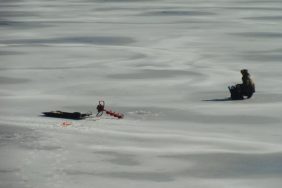 Sooner or later every hunter will have the hunting gods smile upon them and a trophy animal will hit the ground. And then, it will be time to find a good taxidermist. Most hunters don’t have a regular taxidermist and finding a good one is becoming harder and harder these days with so many hobbyist and part-time taxidermists sprouting up all over the country. Here are some general tips on how to make sure the person in charge of your trophy animal is reliable and worthy of your business.
Sooner or later every hunter will have the hunting gods smile upon them and a trophy animal will hit the ground. And then, it will be time to find a good taxidermist. Most hunters don’t have a regular taxidermist and finding a good one is becoming harder and harder these days with so many hobbyist and part-time taxidermists sprouting up all over the country. Here are some general tips on how to make sure the person in charge of your trophy animal is reliable and worthy of your business.
Know what quality really is.
This might sound like a given, but to an untrained eye, quality is just an opinion and you know what they say about everyone having an opinion. Don’t trust opinion when it comes to knowing what true life-like quality is.
For example, if you are interested in having a Whitetail deer mounted, study photos of what a live deer really looks like. What are the true shapes of its eyes? What directions do its whiskers lay? What shape are its tear ducts and what position do ears rest in when relaxed or while on alert? All of these questions should easily be memorized by every deer hunter. In the end, does your potential taxidermist produce deer mounts that look alive or does he or she produce bug-eyed animals that look like they are surprised or like they got run over by a truck?
What is the turn-around time?
Every taxidermist has a period of time it takes to complete a mount. A true professional should take under a year. If your target taxidermist takes longer than a year, you should find out why. Chances are that your taxidermist is either lazy or is just not a great businessperson. Lazy taxidermist procrastinate, but bad business people fail to realize they need help and they take on more work than they can handle. It is possible that some good taxidermist can deliver, even if they take longer than a year, but such a length of time could be a red flag.
Where is the tanning performed?
Tanning is the most important ingredient to producing high-quality mounts that last a lifetime. All animal skin is leather and only superior tans properly preserve skin. Some taxidermist do their own tanning, but only a rare few can truly pull off an adequate tan. ‘Home tanning’ can be a red flag so ask to see the taxidermist’s oldest mounts they have completed using their own tan. Look for cracking around the lips, eyes, nose and especially the edges of the ears. If you see any cracks, you will know that the skin was not properly preserved throughout the tanning process. A good tan will never crack unless a mount is kept near a wood stove or in the destructive ultraviolet light of sunny window.
If your taxidermist sends their skins and capes elsewhere to be tanned, that is a good sign. Even a bad professional tannery produces a decent tan most of the time. If your taxidermists entrusts professionals to tan your cape or hide, you can rest easy as the only down-side to this method is a slightly longer turn-around time for your mount due to your taxidermist waiting on the tannery’s turn-around time.








